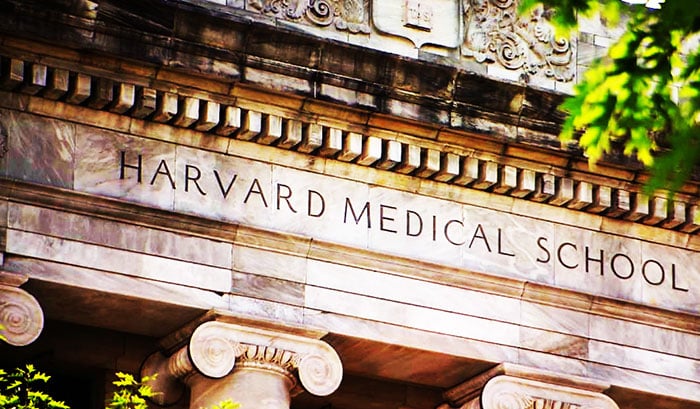The pursuit of a medical education in the United States is a profound and transformative journey, marked by rigorous academics, clinical training, and a commitment to healthcare excellence. This article delves into the distinctive landscape of medical schools in America, exploring their unique features, the admissions process, and the holistic training that molds aspiring physicians into compassionate healers.

1. The Rich Tapestry of Medical Education:
Diverse Programs and Specializations:
Medical schools in the United States offer a diverse array of programs and specializations that cater to the multifaceted world of healthcare. From allopathic (MD) to osteopathic (DO) programs, students can choose pathways that align with their career goals and philosophical approaches to patient care.
Leading the Global Frontier in Research:
American medical schools are at the forefront of medical research, contributing groundbreaking discoveries and advancements to the global healthcare landscape. Institutions such as the Mayo Clinic, Johns Hopkins University School of Medicine, and the Cleveland Clinic are synonymous with cutting-edge research that transcends traditional boundaries.
2. The Admissions Odyssey:
Rigorous Admission Criteria:
Gaining admission to medical school in the U.S. is an arduous process, reflecting the gravity and responsibility associated with a medical career. Admissions committees meticulously assess academic performance, letters of recommendation, extracurricular activities, and the all-important Medical College Admission Test (MCAT) scores.
Holistic Admissions Approach:
Many medical schools in America employ a holistic admissions approach, considering not only academic achievements but also personal qualities, diversity of experiences, and a genuine commitment to the values of healthcare. This approach aims to nurture a cohort of medical students who bring diverse perspectives and strengths to the field.
3. The Academic Odyssey:
Integrated Curriculum and Problem-Based Learning:
Medical education in the U.S. often features an integrated curriculum that combines basic sciences with clinical experiences early in the training. Problem-Based Learning (PBL) is a common pedagogical approach that encourages students to solve clinical cases collaboratively, fostering critical thinking and practical application of knowledge.
Clinical Rotations and Residency Training:
A hallmark of medical education in the U.S. is the emphasis on hands-on clinical training. Students participate in clinical rotations during their third and fourth years, gaining exposure to various medical specialties. Following medical school, graduates undergo residency training, where they further specialize in a specific field under the guidance of experienced mentors.
4. The Human Element: Patient-Centered Care:
Commitment to Patient-Centered Medicine:
Medical schools in America instill a profound commitment to patient-centered care. The curriculum emphasizes interpersonal skills, communication, and cultural competence to ensure that future physicians approach healthcare with empathy, compassion, and a deep understanding of the diverse backgrounds of their patients.
Simulation and Standardized Patient Encounters:
To enhance clinical skills and patient interactions, medical schools utilize simulation labs and standardized patient encounters. These experiences allow students to practice clinical scenarios in a controlled environment, honing their diagnostic and communication skills before entering real patient care settings.
5. Research Opportunities and Global Health Initiatives:
Pioneering Medical Research:
Many medical schools in the U.S. provide extensive opportunities for students to engage in research projects. This emphasis on research not only contributes to scientific advancements but also prepares future physicians to critically evaluate evidence and stay abreast of evolving medical knowledge throughout their careers.
Global Health Initiatives:
Recognizing the interconnected nature of global health, medical schools often incorporate global health initiatives into their programs. Students may have the opportunity to participate in international medical missions, research collaborations, and experiences that broaden their understanding of healthcare disparities and cultural nuances.
6. Challenges and Opportunities in Medical Education:
Addressing Diversity and Inclusion:
Medical schools are actively addressing the need for greater diversity and inclusion within the medical profession. Initiatives aimed at recruiting underrepresented minorities, fostering a supportive environment, and dismantling barriers to access are essential steps in creating a healthcare workforce that reflects the diverse patient populations it serves.
Adapting to Technological Advancements:
The integration of technology into medical education is an ongoing endeavor. Virtual reality, telemedicine, and digital learning platforms are increasingly being incorporated to enhance education, allowing students to engage with medical concepts in innovative ways and adapt to the evolving landscape of healthcare delivery.
7. The Future of Medical Education:
Meeting Healthcare Challenges:
The future of medical education in America must grapple with emerging healthcare challenges. From the impact of pandemics to the growing burden of chronic diseases, medical schools play a pivotal role in preparing a resilient and adaptable healthcare workforce capable of addressing the evolving needs of society.
Interdisciplinary Collaboration:
The healthcare landscape is becoming increasingly interdisciplinary. Future physicians will need to collaborate with professionals from various fields to deliver comprehensive and patient-centric care. Medical schools are responding by fostering interdisciplinary collaboration and equipping students with the skills to work seamlessly within healthcare teams.
Conclusion: Shaping Tomorrow’s Healers
Aspiring physicians entering the realm of medical schools in America embark on a journey that extends far beyond textbooks and examinations. It is a journey marked by profound human connections, ethical considerations, and a commitment to lifelong learning. The holistic approach to medical education, the emphasis on patient-centered care, and the integration of research and clinical experiences converge to shape individuals into not just medical practitioners but compassionate healers who will navigate the complexities of healthcare with resilience, empathy, and excellence. In the dynamic landscape of American medical education, the future holds the promise of an evolving profession that continues to meet the healthcare needs of a diverse and ever-changing society.